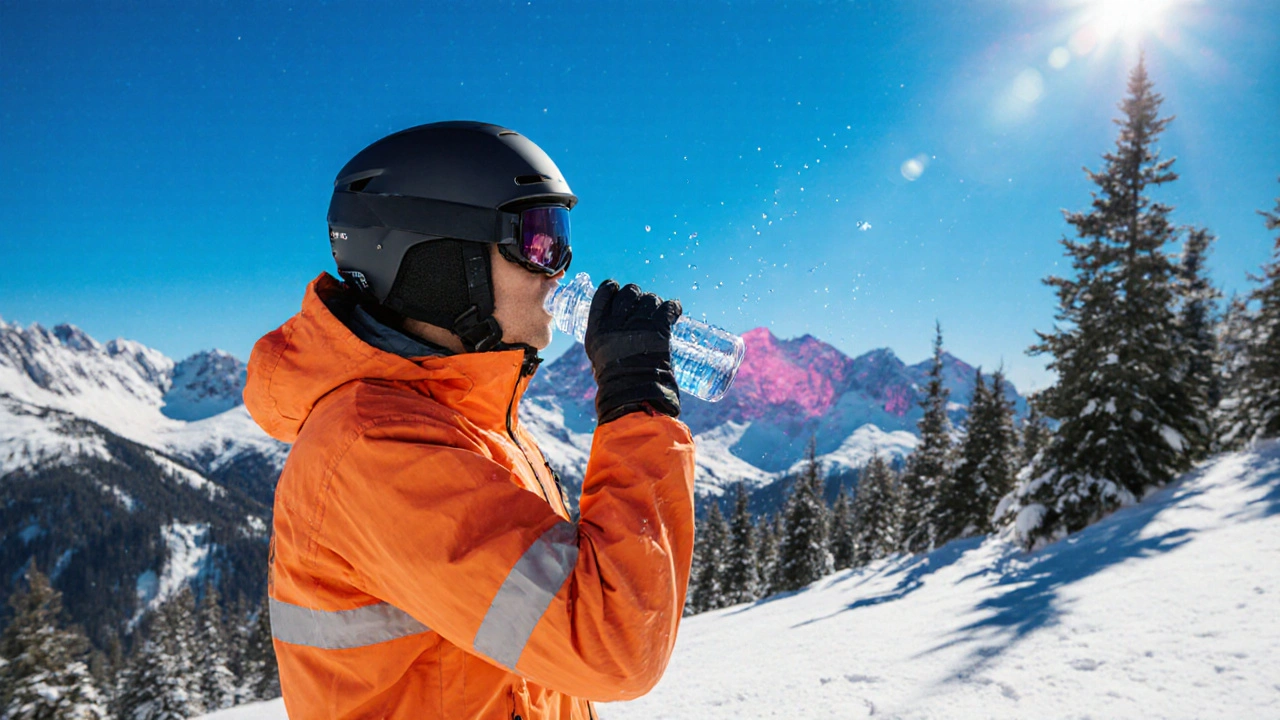When you’re gearing up for a day on the mountain, skiing health tips, simple, science‑backed practices that keep you safe, energized and injury‑free while you ski, become your best companion. Also known as ski health advice, these tips blend fitness, nutrition, clothing strategy and altitude awareness into a single game plan you can follow on lift or trail.
One of the first things many skiers overlook is altitude sickness, a set of symptoms caused by reduced oxygen at higher elevations. Even if you’ve never felt it before, a quick ascent can trigger headaches, nausea or shortness of breath. The key to avoiding it is a gradual climb and staying hydrated. Drink water before you board the lift, take short breaks at mid‑level runs, and if you feel dizzy, descend to lower ground for a few minutes. This simple step directly reduces the risk of altitude‑related fatigue and lets you enjoy longer sessions.
Altitude isn’t just a breath‑holding issue; it also influences how your muscles use energy. At higher elevations, the body leans on carbohydrates more than fats, which means your pre‑ski snack should be carb‑rich. A banana or a small energy bar can keep blood sugar steady, preventing the crash that often follows an early run.
Another common challenge is cold weather injury, damage to skin, tissues or nerves caused by low temperatures. Frostbite and chilblains love the exposed areas—fingers, toes, ears. Layering is your armor: a moisture‑wicking base, an insulating mid‑layer, and a wind‑proof outer shell. Make sure every layer fits snugly; gaps let cold air in and melt the insulation’s effectiveness.
Don’t forget your joints. The cold can tighten ligaments, making them more prone to sprains. Warm up with dynamic stretches—leg swings, ankle circles—while you’re waiting in the lodge line. Moving blood through the limbs before you hit the snow acts like a lubricant, keeping joints supple.
What you eat before and during a ski day shapes your energy levels and recovery. nutrition for skiing, a balanced intake of carbs, protein and healthy fats tailored to cold‑exercise demands means choosing foods that digest quickly yet sustain stamina. A bowl of oatmeal with nuts and berries an hour before you start gives a steady carb release. Mid‑run, grab a handful of trail mix or a whey protein shake to repair muscle fibers that are already working hard.
Hydration is easy to forget when it’s freezing, but dehydration sneaks up fast. Aim for at least 500 ml of water before you head out, and sip a warm electrolyte drink after every hour on the slopes. The warmth helps maintain core temperature while the electrolytes replace minerals lost through sweat, even in cold weather.
Being ski‑fit isn’t about lifting the heaviest weights; it’s about functional strength, balance and cardio endurance. A weekly routine that mixes squats, lunges, core planks and interval cardio mimics the demands of turning, stopping and navigating varied terrain. Think of each squat as a mini‑turn, each lunge as a downhill push, and each plank as the core stability you need to stay upright on icy patches.
Flexibility matters too. Yoga poses like Warrior II and Downward Dog open the hips and hamstrings, which helps you maintain a low, stable stance. The more mobile you are, the less strain you’ll feel on the knees and lower back after a long day.
Every skier benefits from a quick pre‑run check: tighten boot straps, ensure bindings are set to your weight and skill level, and verify that your helmet fits snugly. A properly adjusted binding can prevent a leg from twisting in a fall, dramatically lowering fracture risk.
While you’re carving, keep your eyes up the hill. Looking ahead gives your body time to react to moguls, ice patches or other skiers, reducing sudden stops that cause strains. If you’re new to a particular trail, start with a gentle run to gauge snow conditions before committing to steeper sections.
Finally, listen to your body. A sore knee or lingering fatigue is a sign to rest or modify your activity. Pushing through pain often leads to more serious injuries that could keep you off the slopes for weeks.
All these skiing health tips work together: altitude awareness keeps you breathing easy, cold‑weather strategies protect your skin and joints, nutrition fuels every turn, fitness builds the strength you need, and smart safety habits stop injuries before they start. Below you’ll find a curated collection of articles that dive deeper into each of these areas, offering step‑by‑step guides, expert recommendations and real‑world examples to help you put these ideas into action on your next trip up the mountain.
Posted by
Jenny Garner
14 Comments

Learn fast, practical ways to prevent and relieve dizziness and motion sickness on ski trips, from hydration tips to medication choices and natural remedies.
read more